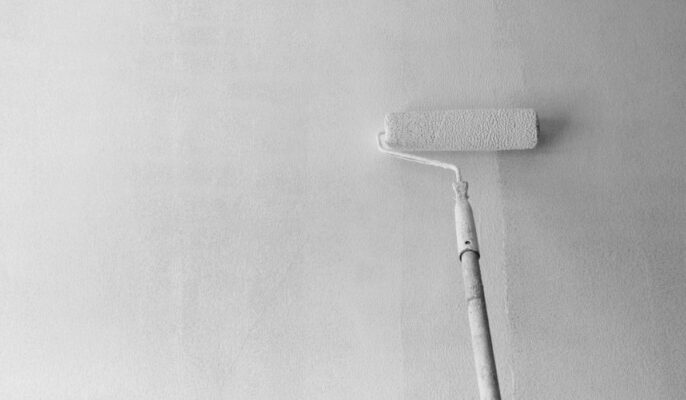Have you been thinking about painting your walls? A fresh coat of paint can brighten up your home. But before that, don’t forget to prime your walls. Priming a wall before painting it is absolutely necessary. Primers are undercoats that are applied to the wall before painting. It helps the paint adhere to the surface instead of sinking into the wall. Primer for walls can help to prevent existing paint and stains from showing through the fresh paint.
Source: Pinterest (Making Manzanita)
See also: Putty paint: Variants, application, advantages and safety measure
Why prime a wall?
A wall must be primed before painting. This way, the paint will remain intact for a long time without fading or cracking. Primer evens out the surface and creates a smooth surface for the paint to stick on. It acts as a protective layer to protect the wall from moisture and other damage.
How to prime a wall?
Materials you will require
- Primer: choose the appropriate primer type based on the surface you are priming (latex primer for drywall, an oil-based primer for wood, etc.)
- Paintbrush or paint roller
- Paint tray
- Masking tape
- Sandpaper
- Plastic sheets or newspapers
Prepare the wall
Cleaning the wall and removing dust, grease and dirt is necessary before priming. You can use a sponge or a damp cloth to wipe it down if necessary. Now look out for any scratches or holes and fill them with patching plaster. Use sandpaper to lightly sand the wall and smoothen the surface. After sanding, wipe the wall with a damp cloth to remove any remaining dust.
Next, you should protect any surfaces you won’t be painting. Use masking tape to mask off window and door frames and the ceiling. Cover the floor with plastic sheets or newspapers to protect it from paint drips.
Source Pinterest (Benjamin Moore)
Prime the wall
- You will need to stir the primer with the help of a stick. By doing so, any pigments or solids that have settled down will be distributed uniformly.
- Now take your paint brush or paint roller out and dip it into the primer and remove the excess by wiping it down into the paint tray.
- Begin by filling in the edges with a fine paintbrush. Brush out even strokes and apply a thin, even coat of primer to the corners, edges and hard-to-reach areas. Then, use a paint roller for the major portions of the wall.
- Apply the primer in small parts, using either vertical or horizontal strokes. Always remember to remove excess primer from the roller to ensure that you paint in an even manner.
- If the first coat of primer doesn’t seem to work that efficiently, apply the second coat only when the first coat has dried.
Drying the wall
The drying time for primer depends upon several factors; you should refer to the manufacturer’s instructions on the primer can. Once the wall is dried completely, check out for any uneven or bumps left and smoothen them out with the primer.
Now that your wall is primed and dried, you can begin the painting process.
FAQs
Why is wall priming necessary?
Priming a wall ensures that the paint does not peel off over time. It improves the paint colour, resulting in a more bright and even finish.
Can I use the same primer for all the surfaces?
There are a variety of primers available in the market, and using the appropriate primer ensures the best results.
How much time is required for a primer to dry?
The time usually varies from one primer to another. You should check your primer for the product label.
Can I paint my walls without priming?
You can skip priming a wall, but it is generally not recommended. It may result in the paint not adhering properly, uneven colour distribution or even a shorter paint life.
Which is better- a paint roller or paint brush?
While paint brushes work best for the edges and the areas which are quite hard to reach, paint rollers are recommended for fine finish in the bigger area.
| Got any questions or point of view on our article? We would love to hear from you. Write to our Editor-in-Chief Jhumur Ghosh at jhumur.ghosh1@housing.com |
